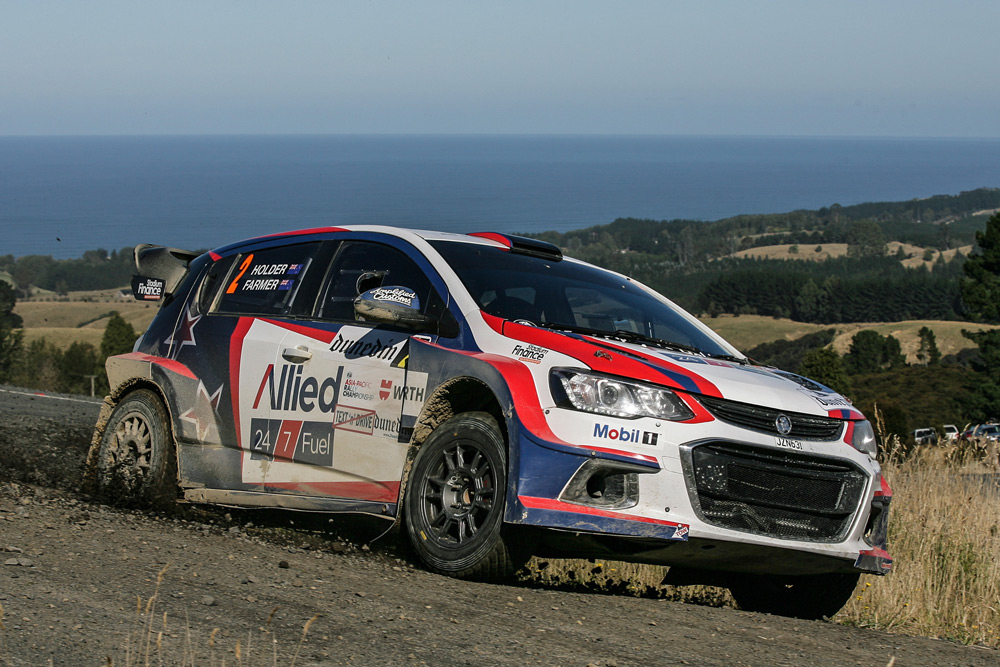Understanding the new APRC concept
It seems to have slipped under the radar of most rally fans. That is the major change introduced this season to the FIA Asia Pacific Rally Championship (APRC).
Usually a championship, such as the New Zealand Rally Championship is a series of events over time where points are accrued. Previous to 2019, this was the formula for deciding the APRC title.
The big change is that the APRC is now a series of events with the title being decided at one event – Rally China 27-29 October.
Qualifying for the final is by entering two qualifying rounds in your region, either the Pacific (Australia and NZ) or Asian (Japan Indonesian and China). NZ has already hosted two Pacific rounds – Rally Otago and the International Rally of Whangarei.
“It departs from the norm,” commented APRC media person Lance Hastie. “It answers the big question of costs for competing for an FIA title by reducing costs.
“The catch is to get competitors, drivers, teams and fans to understand the concept. Now an FIA title is open to a wider ‘audience’. You don’t have to compete at seven events in seven different countries requiring very large budgets.
“The two regions have there own title’s, the Pacific and Asian Cups – and are aggregate of points scored at your qualifying rounds and the final. All you need to do is enter.”
This year five Kiwi drivers have entered the APRC. Hayden Paddon, David Holder, Andrew Hawkeswood and son Jack along with Mike Young. While the first four are entered for the Pacific Cup only, Young is competing in both regions.
Finishing positions for the regional events don’t count for the overall title as Hastie explains.

“Even though, for example, Dave Holder retired out of Rally Otago, he stills qualifies for the final at Rally China. While he won’t be in contention for the Pacific Cup, he has an equal chance with any other driver at the final. We expect to see up to 23 drivers competing for the title in China.
“The other point to note is that you can use a different car in the final. For example you could qualify in your region, then lease a car in China for the final.
“Entry criteria for qualifying rounds (and the final) is the car has to be eligible within your country/region plus other supplementary safety criteria.”
So how did this come about?
“It was about breathing life into the championship which was coming more and more difficult. The new idea has evolved from the APRC group.
“It’s been accepted and backed by the FIA and giving significant support, including money and high level personnel at each round and a WRC media delegate for promotion of the championship.”
The APRC are providing a $5k budget for every round that meets the criteria, to help with logistics and running of the event.
The intention is to move the final to a different event each year with the possibility of having it in New Zealand next season.
“Imagine that,” commented Hastie. “Imagine the number of local entries it would generate plus the drivers that could come over from Australia and Asia.”
The scenario could be that Otago and Whangarei rallies would, like this season, be two Pacific regional rounds with the final being Rally NZ later in the year.
“There is a co-driver’s, team and manufacturer’s title up for grabs as well,” said Hastie. “It is an easier way to chase a FIA title.”
First held in 1988, the APRC was created out of the successful expansion of the World Rally Championship into Asia.
Rod Millen was the first Kiwi driver to win the title in 1989 driving a Mazda 323 4WD. The late Possum Bourne (pictured above in 2000) won the title in 1993 (Subaru Legacy RS), 1994 (Subaru Impreza 555) and in 2000 (Subaru Impreza WRX).
2019 FIA Asia-Pacific Rally Championship – calendar
1: Rally Otago – New Zealand – 13-14 April (P)
2: Rally Whangarei — New Zealand — 4-5 May (P)
3: Montre Rally – Japan – 6-9 June (A)
4: Rally Tasmania – Australia — 22-23 June (P)
5: Rally of Medan —Indonesia — 26 – 28 July (A)
6: Eureka Rally – Australia – 24-25 August (P)
7: Rally Hokkaido — Japan – 21-22 September (A)
8: China Rally — Longyou – 26-27 October – (A) final
(P) = Pacific Cup qualifying round.
(A) = Asia Cup qualifying round.




Comments